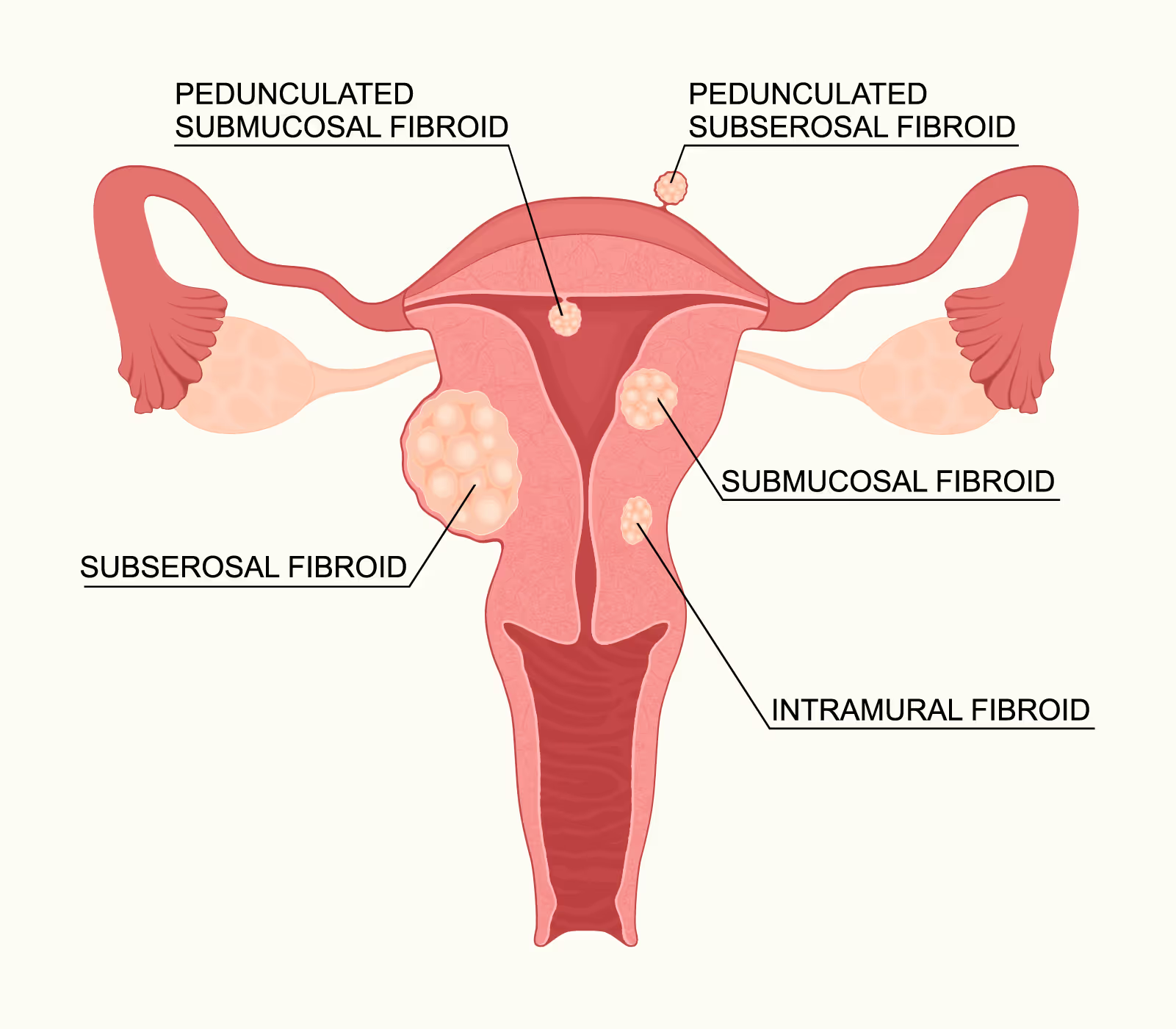Endometrial Polyps

What Causes Endometrial Polyps?
The exact cause is not fully understood, but their growth is linked to the hormone estrogen. While any woman can develop them, certain factors can increase your risk, including being in the perimenopausal or postmenopausal stage, PCOS, obesity, or taking the medication Tamoxifen.
Common Symptoms
Many women with endometrial polyps have no symptoms at all. When symptoms do occur, the most common one by far is Abnormal Uterine Bleeding (AUB). As medical reviews confirm, up to 25% of women experiencing abnormal bleeding are found to have polyps. This can present as:
- Bleeding between periods (intermenstrual bleeding or spotting)
- Heavy or prolonged menstrual bleeding (menorrhagia)
- Irregular menstrual cycles
- Postmenopausal bleeding (any bleeding after menopause is considered abnormal and should be evaluated)
- Infertility or difficulty conceiving (polyps can interfere with successful implantation)
For most women, polyps do not cause pain. The primary issue is typically the unpredictable and inconvenient bleeding.
The Path to Diagnosis
Because polyps are soft and located inside the uterus, they cannot be felt during a standard pelvic exam. Diagnosis relies on advanced imaging that allows your doctor to see inside the uterine cavity.
- Transvaginal Ultrasound: This is the most common first step. An ultrasound probe is placed in the vagina to get a clear picture of the uterus. It can often identify a thickened uterine lining or a growth suggestive of a polyp.
- Hysteroscopy: This is considered the gold standard for diagnosing endometrial polyps. A very thin, lighted camera (a hysteroscope) is passed through the cervix directly into the uterus, allowing the doctor to see the entire uterine lining in detail on a screen.
What Are My Treatment Options?
Treatment depends on your symptoms, the size of the polyp, and your personal health factors.
- Expectant Management: If a polyp is small (less than 1 cm) and you have no symptoms, it may be reasonable to monitor it. Some small polyps can resolve on their own.
- Hysteroscopic Polypectomy (The Gold Standard Treatment): This is the most effective and recommended treatment. It is a simple, minimally invasive procedure that is often performed at the same time as a diagnostic hysteroscopy.
- How it Works: While directly visualizing the polyp with the hysteroscope, the surgeon uses small instruments to precisely grasp and remove the polyp at its base. The procedure is quick, requires no external incisions, and recovery is typically just a day or two.
- Why it's the Gold Standard: This "see and treat" approach ensures complete removal of the polyp, which provides symptom relief and allows the tissue to be sent to a lab for analysis to confirm it is benign.
- Dilation and Curettage: This is an older, "blind" procedure where the inside of the uterus is scraped without a camera. It is no longer the recommended method for polyp removal, as studies show it can miss polyps up to 50% of the time. Hysteroscopy is far superior.
Questions to Ask Dr. Kim During Your Visit
- Does my ultrasound suggest I have a polyp?
- Could the polyp be the cause of my abnormal bleeding?
- What are the benefits of having the polyp removed?
- What is the hysteroscopic polypectomy procedure like?
- What is the recovery time?
Why Choose Us?
- Direct communication with Dr. Kim and coordinated care throughout your journey
- One provider, Dr. Kim partners with you at every step of your care
- Expertise in Minimally Invasive Gynecologic Surgery (MIGS) with fellowship training and da Vinci robotic system experience
- In-office hysteroscopy for accurate diagnosis and same-day outpatient hysteroscopic polypectomy when needed
- Personalized, extended visits where you have time to be heard and all your questions answered



